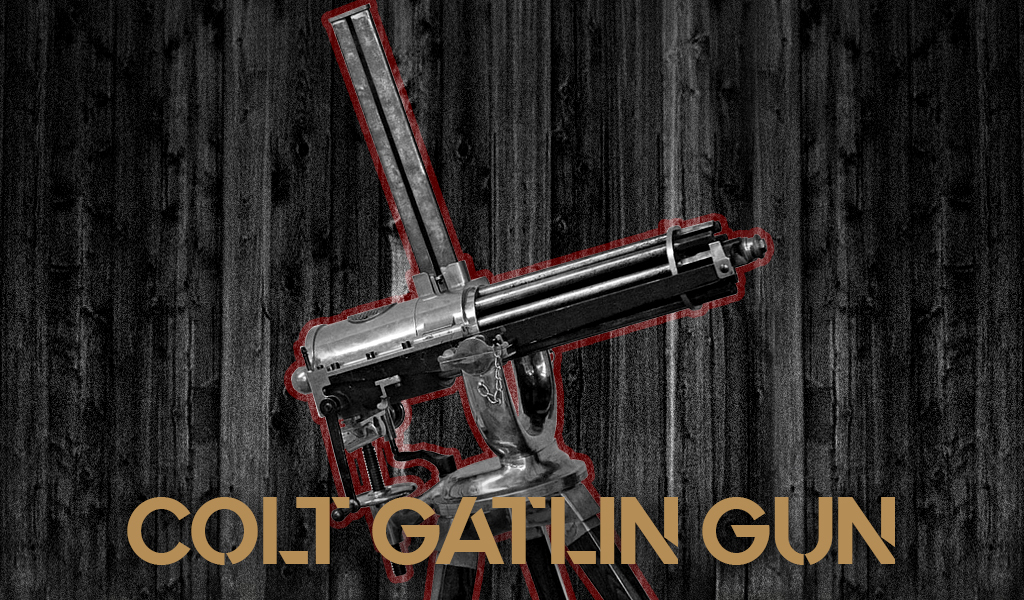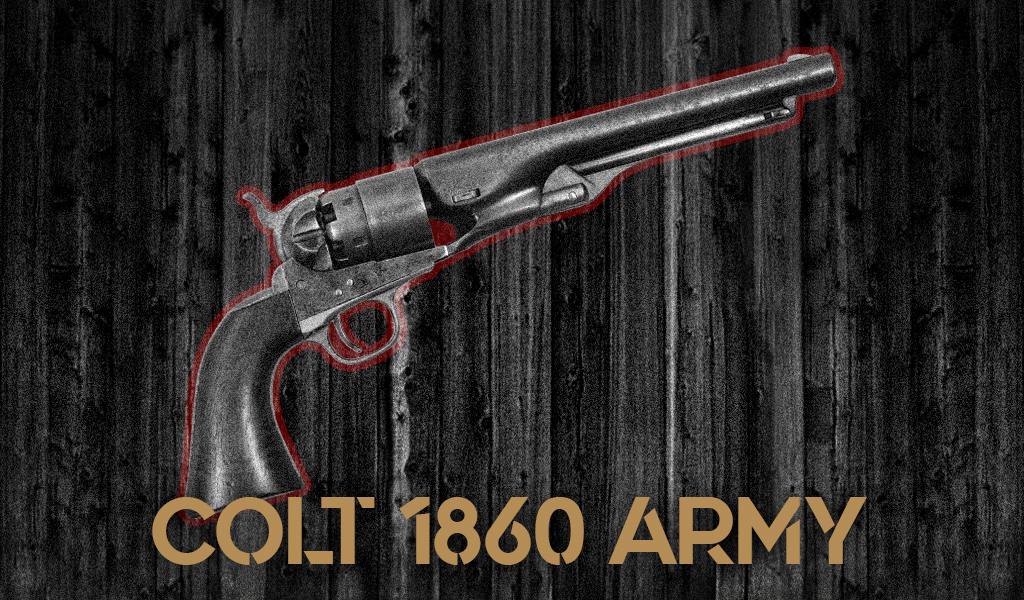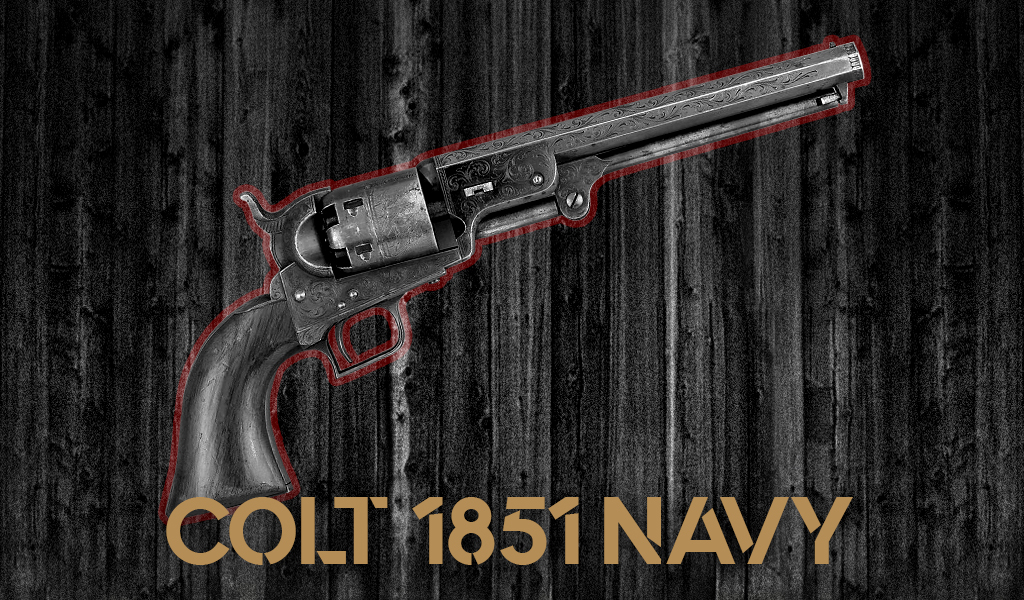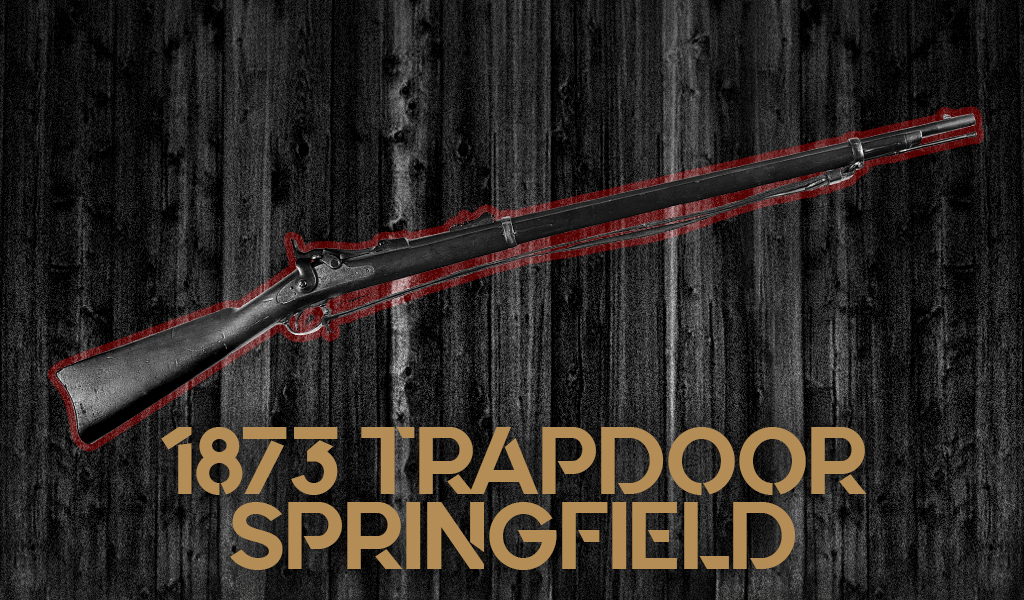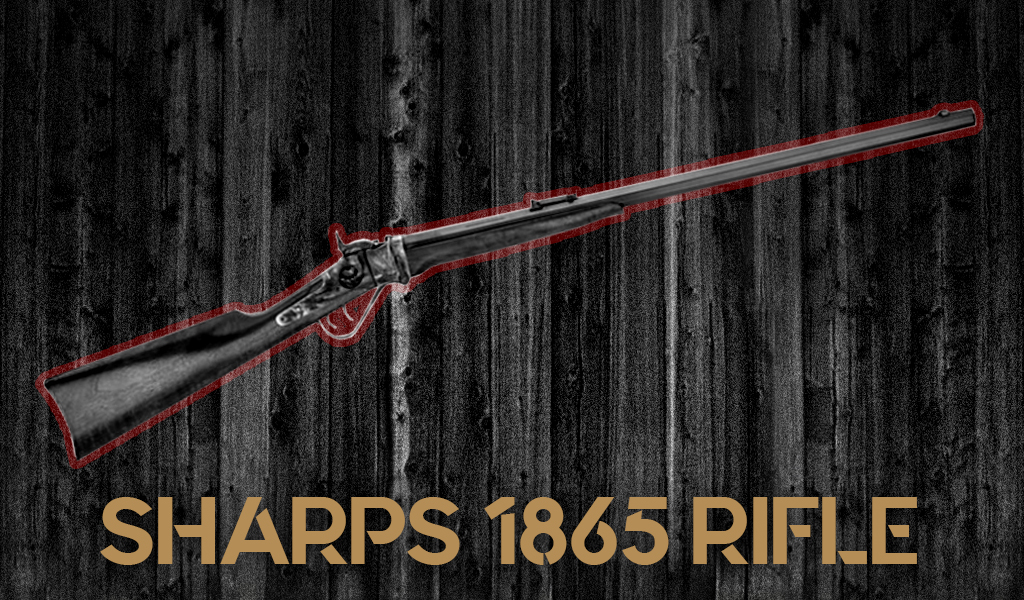
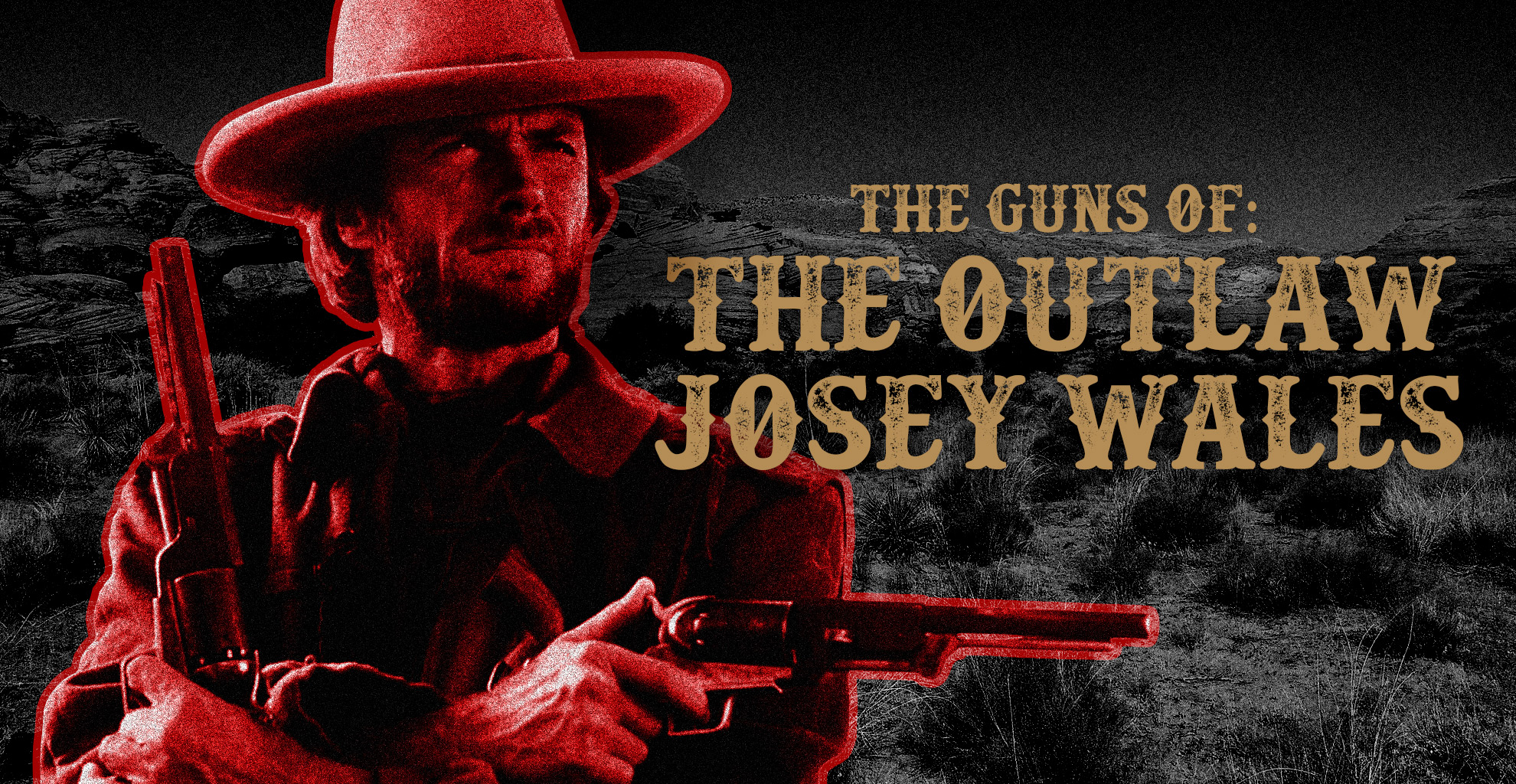
One thing you can count on from any of Clint Eastwood’s early films is action and a fair amount of gunplay. You can also bet your last nickel that you’ll be treated to a few steely-eyed, squinty stares. Cold, hard looks that can make even the toughest of the Western bad guys think twice about challenging him.
Eastwood’s 1976 hit, The Outlaw Josey Wales, holds to form with non-stop action and no fewer than eleven firearms on display throughout the film. Josey Wales was the actor’s eighth Western as a star and his fifth as director. It’s an accomplishment that many of his fans didn’t realize at the time. Today, the living icon is recognized for his work behind the camera, but back in the mid-70s, he was mainly known for his rugged good looks and his no-nonsense demeanor in most of his roles.
The Outlaw Josey Wales might not be Eastwood’s most financially successful Western film, nor was it the highest-rated. But the movie is excellent, it ranks at least in the top five of Clint’s Westerns. Eastwood himself claims it’s every bit as good as his Oscar-winning masterpiece, Unforgiven.
The Rebel Outlaw
No retelling of this story can do it justice; it can only be appreciated fully by seeing it. But the trailer encapsulates it pretty well:
He lives by the gun, he lives by his word, he lives for revenge, he’s an army of one.
His wife and son have been murdered, and his house burned to the ground by Union Red Legs, setting the stage for the perfect Clint Eastwood revenge movie. There are guns aplenty, and the fierce gun battles leave a trail of bodies. At one point Josey tells his Cherokee traveling companion Lone Watie, “I get to liking someone, they ain’t around long” to which the old man replies, “I notice when you get to disliking someone, they ain’t around for long, either.”
It doesn’t take long for the “disliking” to begin.
Outlaw Josey Wales Guns
The Colt Gatlin Guns
The movie starts with a gang of Missouri bushwhackers fighting a guerrilla war for the Confederacy circa 1865. After Lee’s surrender, they are offered amnesty with all but one accepting the Union’s offer—Josey Wales.
When the surrendering Confederates are mowed down by Union troops using two Colt Gatling Guns, Josey Wales springs into action. He kills the gunner and loader in one of the gun carts using his two Colt Walker 1847s. He then takes over the remaining Gatlin and uses it to destroy many of the Union troops and the other gun.
Interestingly enough, Wales manages to shoot these mounted soldiers with an incredibly large and unwieldy weapon and yet not hit a single horse. Another fact worth noting is that this early-model hand-cranked Gatlin, although capable of firing around 200 rounds per minute, had a magazine that held only 20 to 40 rounds and needed to be replaced when it emptied. Since Wales did not have a loader, he can’t have fired as many continuous rounds as he did—unless, of course, he did it in a Hollywood action movie where anything is possible!
The Outlaw Josie Wales: Colt 1860 Army Revolver
Earlier in the movie, Josey’s companion, Lone Watie (played by Chief Dan George), sneaks up on him and holds a Colt Army to his head. “I’m gettin’ better at sneaking up on you like this,” he announces. “Only an Indian can do something like this.” Watie is proven correct in a few seconds when another Indian, Little Moonlight, gets the drop on him with the same type of .44-caliber revolver.
Gun experts, however, have pointed out a flaw in the guns depicted here. It seems that there are four variations of the Colt Army that crop up in the film. Unfortunately, the three cartridge conversions shown at various times throughout the movie did not yet exist at the end of the Civil War.
Colt Army Revolver Variants
- The standard version: Seen at multiple times during the film, it does not have any conversion.
- Loading gate conversion: Wales finds this revolver in the ashes of his house. It’s the same gun he fires at a fence post so he can get comfortable with it. This version has the cartridge conversion and just a loading gate.
- Richards cartridge conversion: This gun also has a loading gate, along with an ejector rod. It comes with a rear sight added to the breech ring instead of on the hammer, a frame-mounted firing pin, and a hammer that’s modified to strike the firing pin. It’s the pistol that Lone Watie is holding when he takes Josey Wales by surprise.
- Richards-Mason cartridge conversion: In 1871, six years after the end of the Civil War, Charles Richards, a Colt employee, was awarded a patent for converting Colt percussion models to breech-loading cartridge revolvers. A year later, William Mason, another employee from Colt, received a patent for an improvement to the Richards model. Eventually, the barrel was redesigned, and the combination of the Richards design and the Mason cartridge system became known as the Richards-Mason conversion. Little Moonlight points this model at Lone Watie as she sneaks upon him.
Colt 1851 Navy Revolver
Union Captain Terrill has one of the best lines in the film. Talking about Josey Wales, he declares: “Not a hard man to track. Leaves dead men wherever he goes.”
Terrill is the scoundrel who directed the Red Legs in the killing of Josey’s wife and son. He carries a Colt 1851 Navy and uses it to help slaughter the unarmed Confederate soldiers. He also fires the .36 caliber octagonal-barreled pistol at the Gatlin Gun cart that Wales has confiscated.
1873 “Trapdoor” Springfield Rifle
Another firearm that was misplaced in time was the Trapdoor Springfield 1873 .45-70 rifle. It was carried by each of the two men who tried to capture Wales near the river. Later, the same rifle pops out of several windows behind Josie when his friends back him up during a showdown with the Red Legs.
Sharps 1865 Sniper Rifle
In one memorable scene, Wales shoots and splits a ferry boat rope. He uses his Sharps 1865 with a full-length J. Stevens brass tube target scope. Firing from the bank to the middle of the river and hitting a small diameter rope on the first shot would be a supreme act of marksmanship in the real world. But it’s a piece of cake at the cinema!
The Rest Of The Cast
Rounding out the cast of Josey Wales guns are a few who make brief screen appearances:
- Enfield 1853: Both Union and Confederate soldiers used these .58 caliber rifles. Two of the movie’s characters, Lone Watie and Ten Bears, also carry them.
- Sharps 1863 Cavalry Carbine: Union soldiers fire their .52 caliber Sharps rifles at Wales near the start of the film.
- Colt 1848 Pocket: Josey Wales carries the .31 caliber pistol in a breast-pocket holster and uses it to kill one of the two men who try to capture him.
- Howitzer Cannon: Confederate soldiers fire a Howitzer Cannon at Union troops during a Civil War battle scene.
Outlaw Legacy
“A strange and daring Western!” –Roger Ebert
That’s how Roger Ebert, the late film critic, described The Outlaw Josey Wales when it first came out. He called the film a “Western that brings together two of the genre’s usually incompatible storylines.” First, it’s about “a loner, a man of action and few words” but also it’s “about a group of people heading west who meet along the trail and cast their destinies together.”
And it was all tied together by the weapons and violence that would come to define the post-Civil War West.


